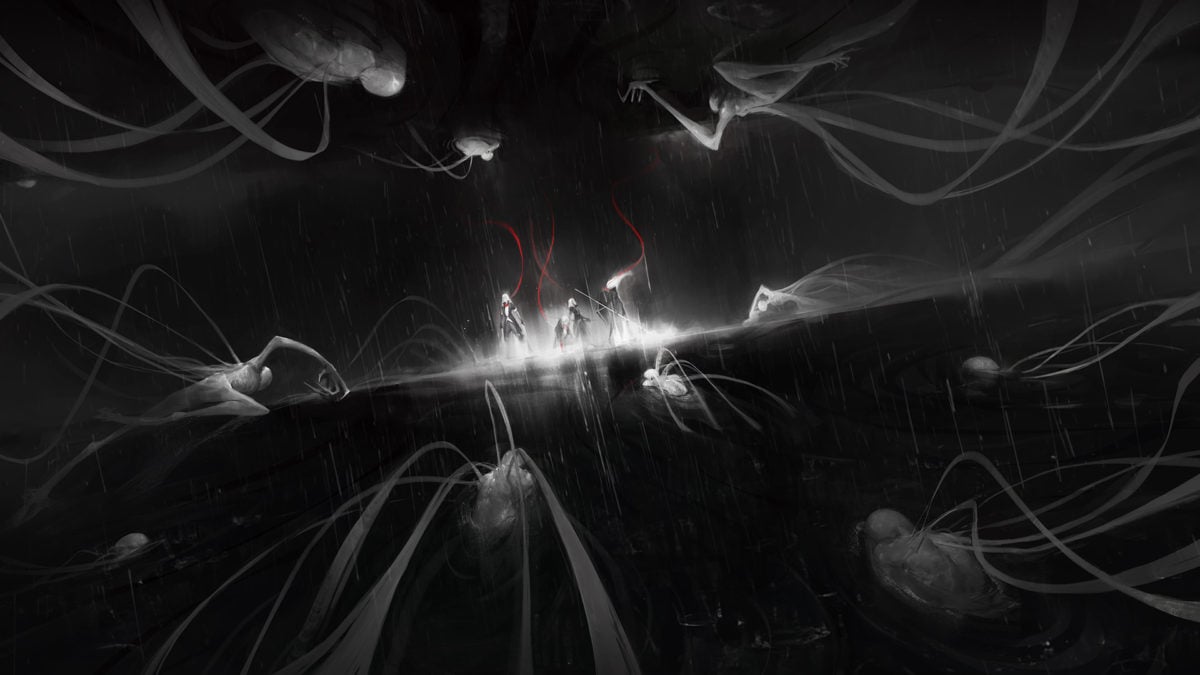We Need More Horror-Injected Video Games

Horror doesn't have to be cheap. Games like Othercide, which blend horror with other genres, are exactly what this industry needs. | Credit: Bodnar Taras/Shutterstock.com
- Othercide blends horror and turn-based tactical gameplay.
- Unusual horror titles are uncommon in games.
- Games like Little Nightmares and Until Dawn have unique horror elements.
Horror is a long-enduring genre. Loosely introduced in the 18th century , horror has prevailed in all art forms from books to movies to music, and especially games.
Silent Hill, Resident Evil, and Dead Space are popular horror game franchises. But many of these are third or first-person titles involving guns and weapons to fend off monsters. This leads to much of the gameplay and scares all feeling somewhat…the same.
Then we have first-person horror titles that leave you without a weapon. The idea was novel with Outlast, Amnesia, and Five Nights at Freddie’s, but these games are everywhere now.
A New, Horrific Perspective
It’s because of this oversaturation that I’m so intrigued by the trailer for Othercide , a new tactical horror RPG in development by Lightbulb Crew.
Bathed in little more than blacks, whites, and reds, Othercide will have to rely on its imagery, design, and storytelling to scare – and that thrills me much more than yet another jump scare in a first-person horror game.
Gameplay details are light, though it’s meant to play like X-COM, only you’re playing as “humanity’s last hope.”

Titles that take horror in an unusual direction intrigue me. They exist as new ways to explore the psychological and philosophical themes rooted within the horror genre. Forced into a different perspective than most horror games, developers must think of new ways to unsettle the player.
Some games have done this to brilliant effect.
Brilliant Horror Games That Break the Mold
Like Amnesia, there’s no primary weapon in Little Nightmares. You’re in a world where everything is bigger than you, and you have to hide. The player is at a distant perspective from the character and can see most of the set at any time.
You’re not creeping down linear corridors and hoping nothing pops out from that fifth door down the hall for the millionth time. Instead, Little Nightmares relies on smart lighting and disturbing set design to establish the scene.

The PlayStation 4 exclusive Until Dawn features eight characters to jump between as the story progresses. Only, these are teenagers ill-prepped to fight off demons and monsters. Instead, you must save (or kill) them with your decisions, choose-your-own-adventure style.
Presenting itself as a generic 80’s slasher horror, Until Dawn’s dynamic plot concludes as something memorable thanks to this shifting perspective. The varying story branches lend themselves to replayability, and you never know how your choices will alter the story.

Or there’s the horror sidescroller, Detention, set in 1960’s Taiwan. As a trapped high-schooler, you’re tasked with solving puzzles to maneuver throughout the haunted educational center.
With a focus on the story and atmosphere, developer RedCandleGames emphasizes its more horrific moments based on real Taiwanese culture.
Detention’s point-and-click gameplay means players can hone in on the underlying themes without worrying about skills and weapons. And the 2D presentation means an unusual portrayal of the scares traditional horror games present.

Unsettle by Being Familiar
These titles, along with Othercide, present a side of horror we don’t see often. They stand out by injecting that horror into something that already exists, finding new ways to shake up the familiar. And what better way to scare the world than screwing with what they’re used to?
Horror doesn’t have to be cheap. The best horror unsettles one to the core. It scares them long after the experience and can instill new perspectives or worldviews in ways unlike any other genre. I hope to see more of this genre-blending in the future, perhaps in VR?